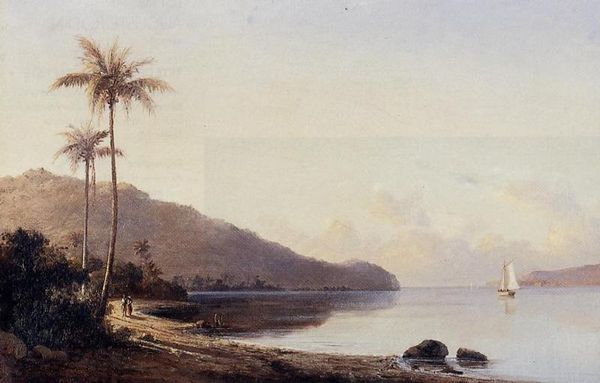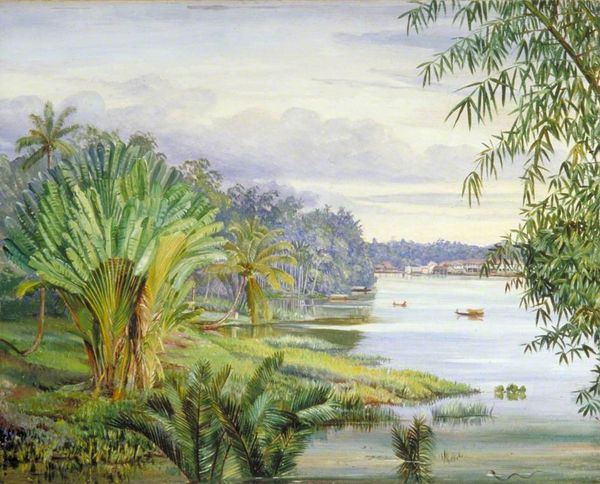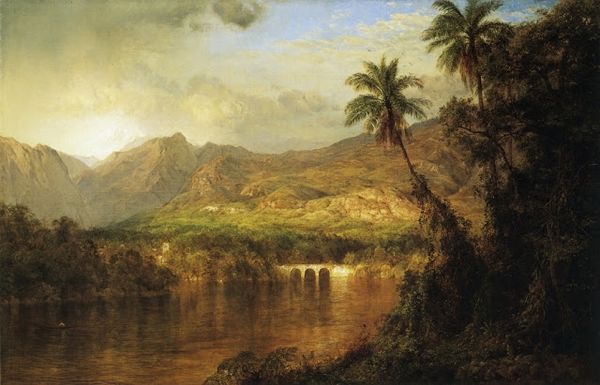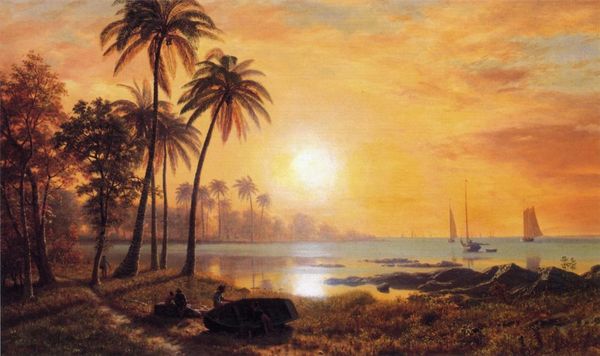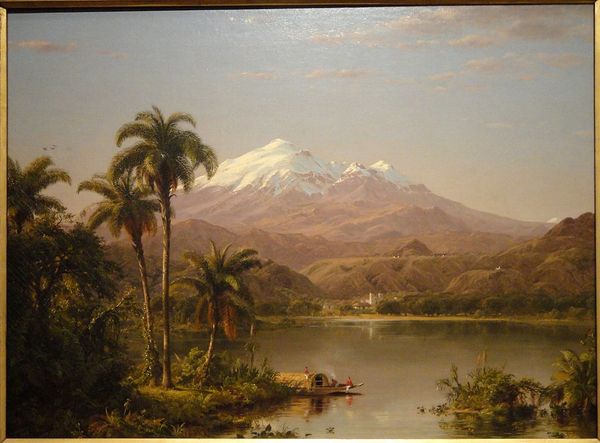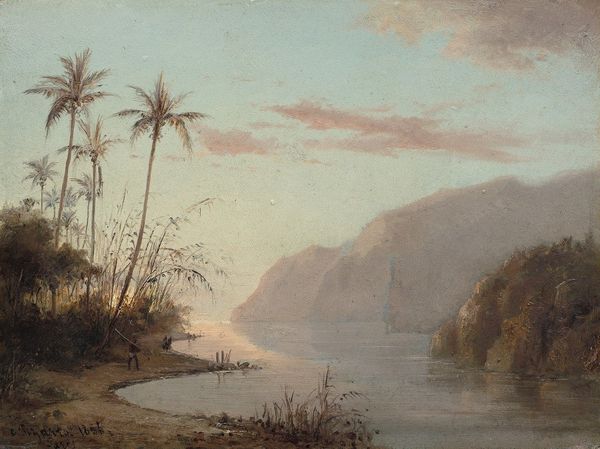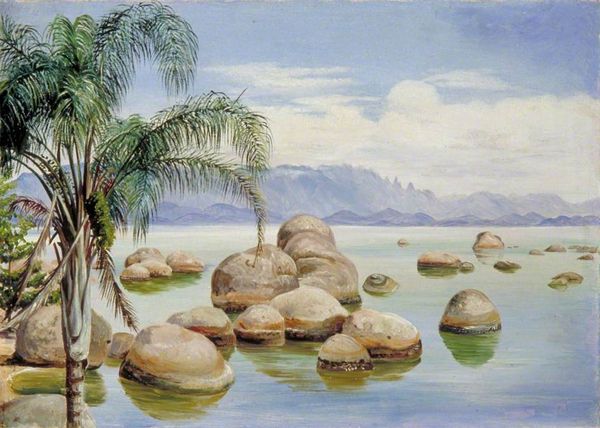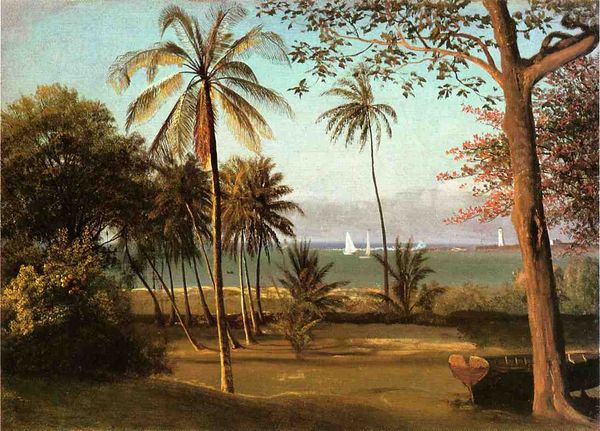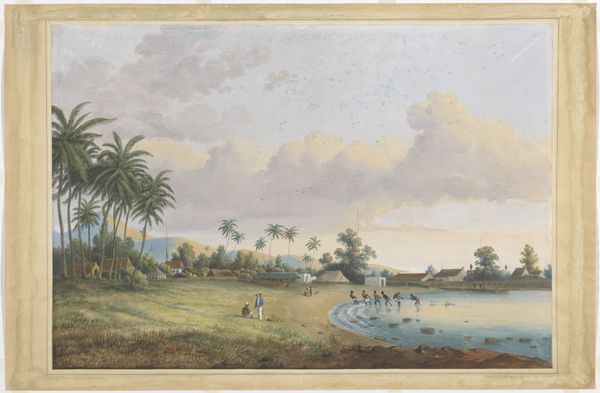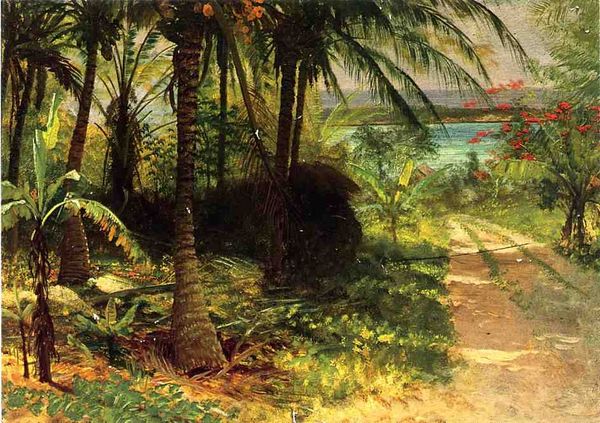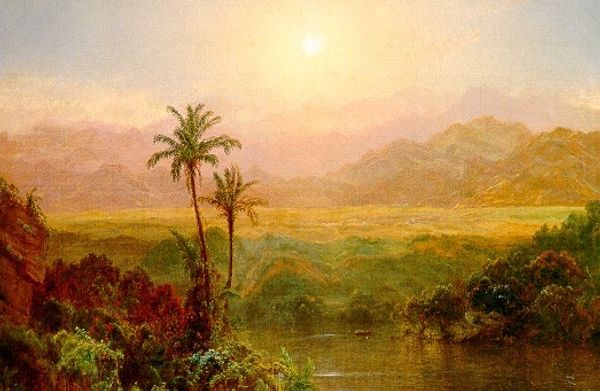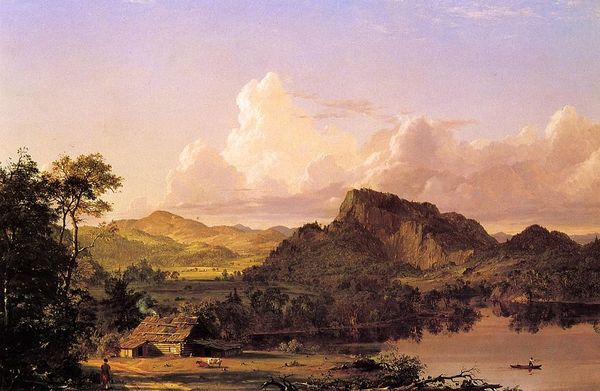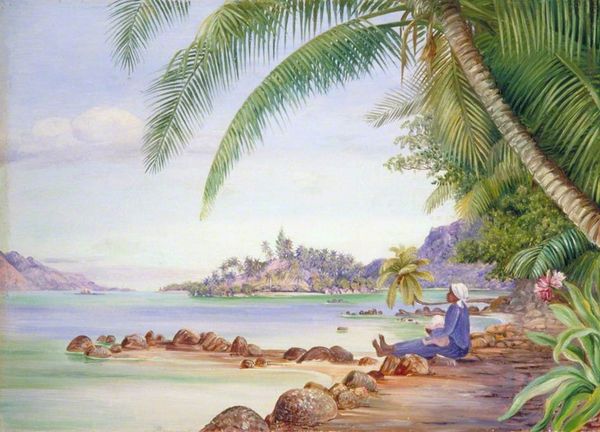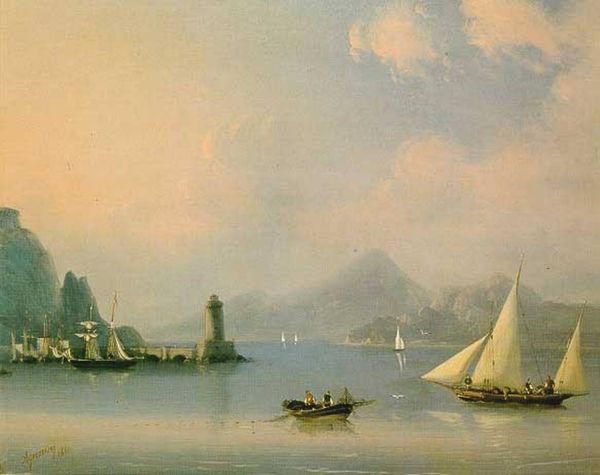
Copyright: Public domain
Editor: This is Marianne North’s "View of Matang and River, Sarawak, Borneo," created in 1876 using watercolors. The overall effect is one of tranquil immensity, an open invitation to journey far, far away. What stands out to you as you consider this piece? Curator: The abundance of palm trees in the composition points to the long standing Western fascination with the exotic East, a desire for what’s unknown and inherently different. How might we decode the repeated image of the palm tree? Does it promise respite? Does it evoke adventure, or does it reinforce colonial ideas about the region? Editor: That's a helpful framing. I hadn’t really considered the "colonial gaze" implicit in what appears at first to be just a landscape. Curator: Precisely! Think about the image of a lone sailboat on the river. It’s an invitation to the viewer, a symbolic crossing into a different world. How is North inviting the viewer to engage with this new landscape? Editor: So the composition guides our eye and maybe even directs our understanding... Are you suggesting that, subconsciously, we, as viewers, are reenacting that crossing every time we view the painting? Curator: In a way, yes. Visual culture is packed with signs that point to collective cultural memory. Each brushstroke, each chosen element like the distant mountains and the type of ship carries symbolic weight related to exploration, commerce, and perhaps even dominion. It also is valuable to consider her choice of watercolour as a medium. The immediacy of the medium points to being made on site but also of the documentary and scientific practices of the 19th century. Editor: That makes me consider how North’s journey and perspective shaped what she chose to paint and how. I will definitely look at this style of art with a more critical eye now. Curator: Exactly. The journey continues.
Comments
No comments
Be the first to comment and join the conversation on the ultimate creative platform.
